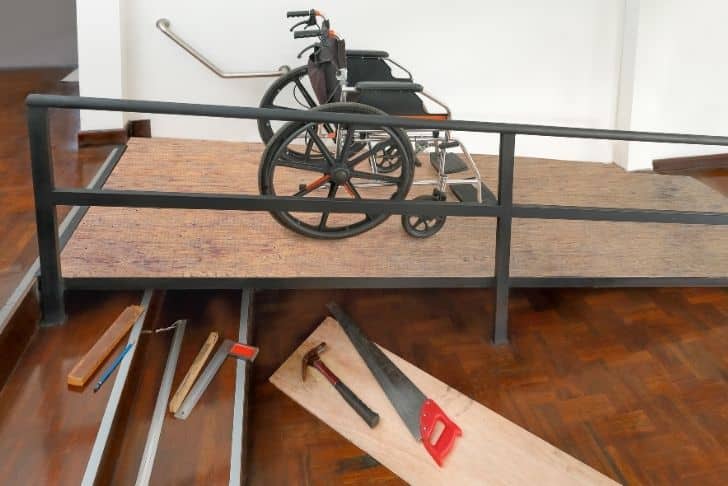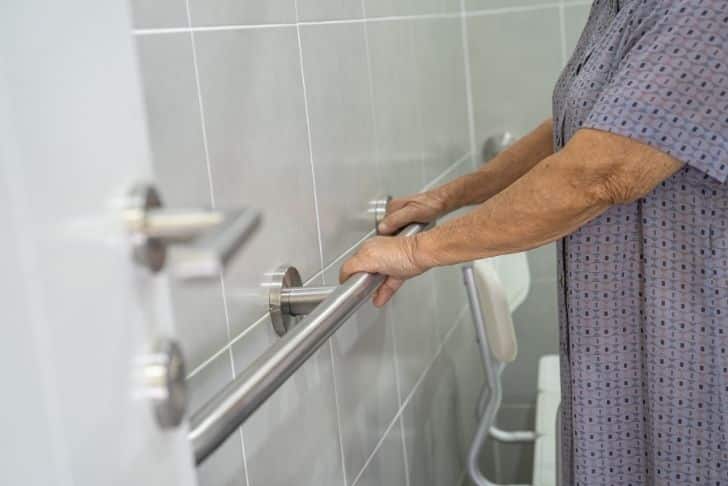In the illuminating article “Home Mobility Solutions for Seniors: From Grab Bars to Wheelchair Ramps”, an array of effective mobility devices for the elderly in various settings are meticulously explored. Detailing the varying supportibilities of devices from canes, walkers, to rollators, the piece extends to recommend mobility scooters for those seniors who may fatigue swiftly from prolonged strolls. Among the home-centered mobility aids featured are grab bars, stairlifts, and wheelchair ramps, with an emphasis placed on choosing a device that not only fits snugly but also inspires activity and is adaptable to the changing needs of a senior.
The cornerstones of these aids’ essence are their roles in fortifying seniors’ confidence, safety, independence, and community contribution. With thoughtful advice on deliberating over options with medical professionals, trying out different models in showrooms, and platforms like Mobility Plus Colorado for testing a plethora of devices, this article serves as a comprehensive guide to enhancing seniors’ quality of living.

Understanding The Need for Home Mobility Solutions
As we grow older, our bodies naturally undergo physical changes that may alter our ability to move about freely. Weakened muscles, pain associated with arthritis, and impaired vision or balance can all affect mobility. Additionally, major life events such as an accident or illness can cause sudden changes in mobility.
There are also major psychological impacts associated with loss of mobility. Reduced mobility could potentially lead to a sense of isolation and depression especially if there are restrictions in the ability to perform daily tasks independently or engage in social activities.
Adequate mobility promotions is crucial in senior independence. It helps in improving quality of life by boosting self-esteem, confidence, safety, and overall wellbeing. Having the ability to move freely once again also reinvigorates your participation in social and community activities.
In the quest of improving senior safety and preventing falls at home, mobility solutions are critical. They help create an environment that caters to your needs and minimizes the risk of accidents.
Exploring Various Types of Home Mobility Devices
Mobility aids come in diverse options intended to cater to a varied range of mobility capabilities. The most common types of mobility aids for seniors include canes, walkers, rollators, wheelchairs, and mobility scooters.
Understanding the specific features and functions of each device aids in setting a clear path on finding a device that is appropriate. Each device caters to a different level of mobility and knowing their functionalities can tremendously help.
In choosing the right mobility device, the focus should be on the senior’s needs and preferences. Consider their daily activities, living environment, and health status to choose a device that will enhance their independence while ensuring safety.
Canes for Seniors
Canes are among the simplest mobility aid and often the first choice for many seniors. There are different types ranging from the single-point, quad, and tripod canes – each designed to offer various levels of support and balance.
Generally, canes can support up to 25% of the user’s body weight. This offers an ideal solution for seniors who need slight assistance with balance and stability.
The benefits of using a cane for mobility and support are numerous. Canes provide lightweight, affordable and easily accessible walking aids. They enhance confidence in walking by providing an extra point of contact with the ground and can aid in relieving pain by taking off some weight from the legs.
Walkers and Rollators
Walkers and rollators are similar devices that provide comprehensive support to seniors with mobility issues. Understanding the differences between walkers and rollators is vital for choosing the right mobility aid. While walkers have no wheels and need to be lifted for movement, rollators, on the other hand, have three or four wheels and are easy to manoeuvre.
Walkers provide all-around support and are good in supporting heavy body weights. They can usually support up to 50% of a user’s body weight.
The benefits of using rollators include easy manoeuvrability, speed, and features such as built-in seats and baskets. However, they may not offer stability like walkers do especially if the senior needs to lean on the device for support while walking.

Mobility Scooters
Mobility scooters are recommended for seniors who need to cover long distances but get tired quickly. They come in different types including three-wheel, four-wheel, travel, heavy-duty scooters and more, depending on the specific purpose.
Potential beneficial accessories for mobility scooters range from storage baskets, canopies, oxygen holders, to cup holders. Each serves to ensure that all essential items are within reach and convenience when using the scooter.
Wheelchairs
Wheelchairs come in many different styles including manual, transport, and power wheelchairs. Each offers unique benefits and serves various mobility needs.
The manual wheelchair is typical for seniors who despite reduced mobility, have the strength in their arms to propel themselves forward or have frequent personal assistance. Transport wheelchairs are portable and are used for short trips and when transported in a vehicle. Power wheelchairs, on the other hand, require little physical effort to operate as they are powered by a battery, they provide the greatest level of independence.
While each model carries its own advantages and disadvantages, the choice on which to use should cater to the specific needs, preferences and lifestyle of the senior.

Home Mobility Devices for Enhanced Safety
Improving home safety with mobility aids extends beyond choosing the right walking aid. Devices such as grab bars, stairlifts, vertical platform lifts and wheelchair ramps contribute towards making the home environment safer and friendlier to maneuver.
Grab bars, when installed in key areas such as bathrooms and stairs, offer additional support when changing positions. In multi-story homes, stairlifts make it possible to safely access higher levels without the risk of falling.
Vertical platform lifts and wheelchair ramps enhance accessibility in and out of your home, especially for wheelchair and scooter users. The right home mobility devices can ensure you lead an active and independent lifestyle within your home without compromise.
Choosing The Right Mobility Device
Choosing a device that fits the senior’s needs is important in enhancing their quality of life. It’s vital to encourage seniors to engage in activities and monitor their mobility capabilities.
Using mobility devices appropriately ensures they serve their function while preventing any potential harm. Regular monitoring of the seniors’ needs can also help in adjusting the type of device used as their mobility needs change.
Medical Consultation and Prior Testing
Involving medical professionals is important in the process of choosing a mobility aid. They can help provide an objective evaluation of the seniors’ physical ability and recommend suitable devices complete with advice on how to use them.
Family members should also be involved in the decision-making process. Sharing this responsibility can help in ease the senior into the idea of using a mobility aid.
Trying out different models before settling on a purchase helps to ensure comfort and compatibility with the device. Comfort and ease of use are key to encouraging the senior to use the mobility aid consistently.
Where to Buy and Test Mobility Devices
There are various retailers that provide platforms for testing mobility devices. For example, Mobility Plus Colorado allows customers to try various mobility devices before making a purchase.
The decision between purchasing online or in-store has its pros and cons. While online purchasing offers convenience and often wider variety, in-store purchasing offers the benefits of trying the device and getting advice from experts.
There are also additional resources for seeking advice and information on mobility aids. Refer to credible online health sites, get advice from your health care provider or join related forums for more insights. In conclusion, making sure you match the mobility aid to the specific needs of the senior will not only enhance their mobility but also boost their overall quality of life.
